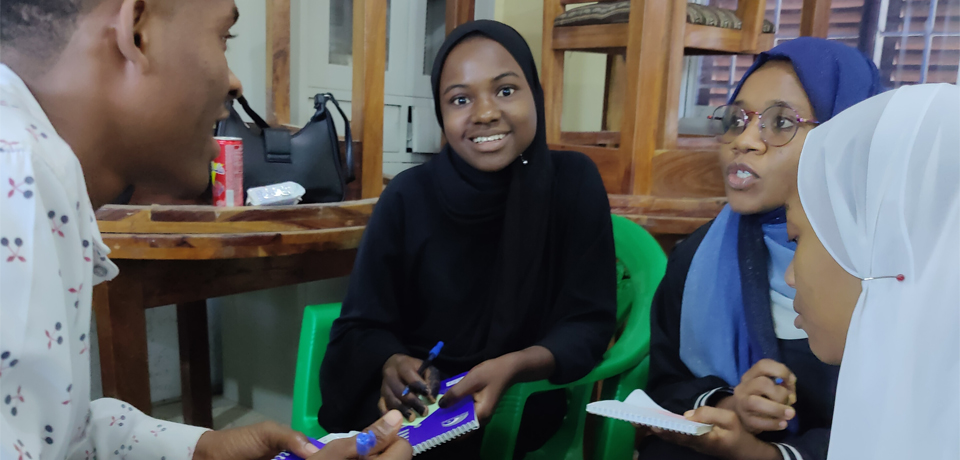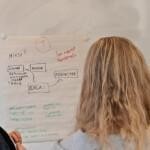
Johanna Tervo & Ulla-Maija Knuutti
Imagine a classroom where students can learn skills like boat engine repair or artificial insemination through virtual simulations tailored to meet the needs of their local industries. Häme University of Applied Sciences (HAMK), a Finnish education technology company 3DBear, four Tanzanian vocational schools, one University of Applied Science and three organisations (Save the Children, Association of Tanzania Employers (ATE), and HakiElimu) are working together to make this vision a reality.
The Piloting Augmented and Virtual Reality Learning (AR/VR) Learning Technology in Tanzania project aims to transform vocational training by integrating digital tools and teacher training in fields as diverse as agriculture, metrology, pharmacy, tourism, and blue economy (fishing). However, before co-creating the tools, a critical first step was understanding the skills required by Tanzanian industries. Here is an example of how we conducted the skills mapping exercise in Tanzania.
Conducting the skills gaps assessment – How did we do it?
The first step in the needs and skills gaps assessment was to create a plan in collaboration with the local partners. In a cross-cultural project like this, finding suitable methods for a different cultural context is crucial. The assessment of industrial needs and skills gaps was carried out in Tanzania between 10 and 18 June 2024. Representatives from each area, including practitioners, academics, and graduates, were invited to a total of five workshops. These workshops were organised at the partner schools’ premises in Dar Es Salaam, Handeni and Zanzibar. The industry experts joined teachers and students on-site, while HAMK and 3DBear staff facilitated the assessment. In this case, assessing did not include evaluating but was more about getting a holistic picture of the situation. HAMK presented the objectives, the scope of the assessment and demonstrated a digital learning environment created for a Finnish vocational school as an example of the final product.
During the workshops, the participants were divided into groups to identify and discuss the skills most needed in their respective fields. This collaborative mapping exercise produced a comprehensive list with a wide array of skills, covering everything from basic safety measures and swimming lessons to specialised techniques like artificial insemination and technical boat engine repair. After the workshop, the lists produced by the different groups were collated into a single list per vocational training field. The number of listed skills varied from 15 to 33.
The skills identified were compared against the curricula to ensure consistency, as misalignment could hinder teachers’ adoption of the new tool to their teaching. The finalised list was then shared with ATE, the partner representing employers from all sectors of the national economy except civil service. ATE reviewed the list for relevance and accuracy, provided feedback, and approved it. The reviewed list now serves as a baseline for further development of the pilot simulations. The further development consisted of AR/VR feasibility for the learning environment and short-listing of the baseline to fit the chosen technical solution.
Lessons learned
The process revealed valuable lessons for conducting cross-cultural assessment. One lesson learned was that performing a needs and skills gap assessment across five schools in different parts of a large country requires significant time. A one-day workshop per five schools required a 10-day stay in the country and a hefty amount of pre-journey logistical arrangements. Despite the logistical demands, it is important to do this kind of activity in face-to-face workshops rather than online.
Secondly, although internet coverage is good in Tanzania, it is advisable to provide free access by purchasing sufficient airtime in advance. Airtime is expensive in Tanzania, so expecting the schools or participants to use their resources for the project is impractical.
Thirdly, while English is widely spoken in Tanzania, some participants may not be fluent or are too shy to express themselves in English. Including a Kiswahili speaker in the team is invaluable. This saves time and helps overcome language barriers.
Moreover, when preparing workshops in Tanzania, ensure participants are provided with lunch and refreshments for whole-day events. Since they are donating their time and expertise to the project, covering their basic needs shows appreciation. This small investment yields good results and fosters long-term buy-in.
While working on a cross-cultural project, unexpected things do happen. Preparation is essential for success, but flexibility and the ability to adapt plans and find instant solutions are equally critical when conducting assessments in different cultural contexts.
Conclusion of Skills Gap Assessment
While innovations like virtual learning environments open exciting possibilities, they must be thoughtfully integrated to be effective.
The assessment represents a vital first step in the project: aligning vocational training with industry needs. Through the collaborative efforts of HAMK, 3DBear, local schools and ATE, the assessment lays a foundation for building digital learning tools tailored to real-world skills. By actively involving teachers, students, graduates, and industry representatives, the project fosters a sense of ownership and relevance among all stakeholders, resulting in the developed tools being practical and applicable in Tanzanian vocational training.
Collaborative planning is a major success factor. It fosters a sense of ownership and enhances the tools’ relevance and usability. Partner schools were actively involved in planning and creation of the needs and skills gap analysis. During the assessment objectives and co-creation methods were explained, and sufficient time was allocated for discussion at each stage, reinforcing ownership and creating opportunities for mutual learning.
The aim of the project is not only to create digital environments but also to educate teachers to use them in teaching. The assessment results will support the development of teacher competencies as well. The produced baseline list of skills will be revisited, and the skills will be prioritised in later stages of the project when teachers start to co-create the content of the digital learning environments. Teacher competency development will focus not only on teaching digital skills but also on enhancing pedagogical competencies, as digital tools serve as enablers for deeper learning experiences. The needs and skills gap analysis serves as one block in the foundation on which successful results will form.
Project background
HAMK and the Finnish educational technology company 3DBear are jointly implementing a project to pilot the development of virtual learning materials for the needs of vocational education in Tanzania. The project is carried out in collaboration with local partners, including the Vocational Education Department of Tanzania’s Ministry of Education, four vocational schools, one university of applied sciences, and three local organizations. The project is funded by Finnpartnership.
Teachers, students, and representatives from the workforce have together identified the skills needed in working life, which will be the focus of the virtual learning materials. Tanzanian teachers will design the learning path and plan the content and filming locations, while 3DBear will handle the filming and editing of the materials. Together, they write the script for the XR material. HAMK will train teachers to use these materials. The project aims particularly to address barriers to schooling, such as long distances and financial challenges, as well as to support girls at risk of being excluded from education.
Authors
Johanna Tervo, M.A. in Conflict Analysis from Häme University of Applied Sciences. She works as Senior Adviser of International RDI at the HAMK Edu Research Unit.
Ulla-Maija Knuutti, M.Sc. In Rural Development from Häme University of Applied Sciences. She works as a Senior Lecturer in HAMK Edu Research Unit.





